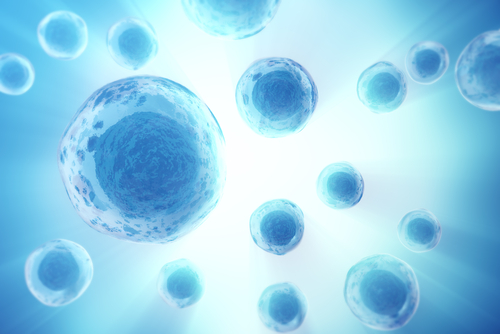Oxidative Stress May Be Therapy Target in ALS, Study of Skin Cells Suggests

Skin cells from people with amyotrophic lateral sclerosis (ALS) have altered metabolisms and increased levels of a type of cellular stress called oxidative stress, a new study shows. This may indicate new treatment targets for ALS.
The study, “ALS skin fibroblasts reveal oxidative stress and ERK1/2-mediated cytoplasmic localization of TDP-43,” was published in Cellular Signaling.
Nearly all cases of ALS are characterized by abnormal activity in the TDP-43 protein. Under normal conditions, this protein exists in the nucleus, which is the part of the cell where DNA is stored. In ALS, however, levels of TDP-43 in the nucleus decrease, and it accumulates in clumps in the rest of the cell (the cytoplasm).
This phenomenon is known to be a driver of motor neuron death in ALS. It also occurs in other cells throughout the body, such as skin cells. Because skin cells can be collected more easily than neurons, they are easier to use for research, making them an attractive cellular model of ALS.
In this study, researchers in Italy examined skin cells from four people with ALS: two of them had ALS-associated mutations in the gene that provides instructions for making TDP-43; the other two had no ALS-associated mutations. Skin cells from people without ALS were examined as controls.
Researchers confirmed that the ALS cells (both with and without mutations) had TDP-43 accumulation in the cytoplasm.
They found that ALS skin cells divided more than control cells, but were less metabolically active. This led researchers to investigate protein synthesis, which is closely associated with metabolism, in the cells.
ALS cells had higher rates of overall synthesis than control cells. Correspondingly, ALS cells also had elevated activity in cellular pathways involved in protein synthesis, such as the mTORC1 pathway.
This included an increase in the activity of ERK proteins, which are part of the mTORC1 pathway. This is notable because ERK proteins aren’t involved only in this pathway. Their activity also is associated with increased oxidative stress — that is, the generation of highly reactive molecules (like hydrogen peroxide) that can cause damage to cellular structures like DNA.
So, the researchers measured levels of oxidative stress markers in the cells, and they found evidence of greater oxidative stress in ALS as compared to control skin cells. Additionally, when the cells were treated with an ERK inhibitor, oxidative stress decreased to similar levels within all the cells (ALS and control). This suggests that ERK activity is a major driver of oxidative stress in these cells.
Furthermore, treatment with the same ERK inhibitor significantly reduced the accumulation of TDP-43 in the cytoplasm. In contrast, treatment with hydrogen peroxide, which induces oxidative stress, increased cytoplasmic TDP-43 aggregation. The latter treatment also increased ERK activity, indicative of a “vicious cycle” where ERK activity drives oxidative stress, which drives ERK activity, all of which promotes TDP-43 aggregation in the cytoplasm.
It is particularly noteworthy that, while exact measurements differed between ALS cells from different individuals, the same trend was seen in all of them, regardless of mutation status. That suggests this elevation in oxidative stress may be a broad feature of the disease.
“[ERK] is critical for the effects of oxidative stress and TDP-43 cytoplasmic translocation, suggesting that it may be a potential target for therapeutic strategies,” the researchers wrote.
They noted, however, that further research is needed to continue untangling these molecular mechanisms. For instance, it remains unclear the extent to which these altered cellular dynamics are a cause or a result of differences in TDP-43 activity in ALS.






